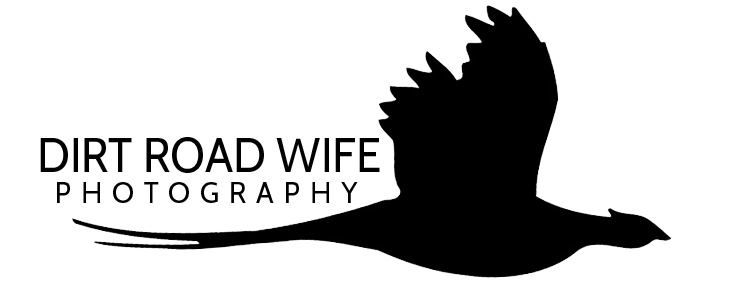

January 7, 2019 / Inspiration Inspiration and Motivation Lessons photography
Finding Your Artistic Style: Five Lessons From Ernest Hemingway
What can a hard-living, hell-raising author from several decades ago teach you about finding your photographic style? Maybe more than you think!
I originally wrote this article for Cole’s Classroom, an online site focused on training and growing photographers. But it got such a great response, I thought I’d share it here, too. If you are a creative type and struggle with finding your voice, read on. Maybe Mr. Hemingway can still teach us a thing or two about artistic success.
I never imagined I could learn a thing or two about finding my photographic style from Ernest Hemingway. But I did. Did ALL high-schoolers have to read something by Hemingway, or was that just a thing in my school? Somewhere in my teens, I was required to read The Sun Also Rises, the first novel written by Ernest Hemingway.
I hated it.
Flash forward twenty-five years. I decided one of the things I wanted to do to improve my photography business was connecting with my audience more with my blog and social media. Meaning writing more things and better things. And I know one of the best ways to improve your writing is to read more. So I challenged myself to start reading more, including different kinds of literature and different authors and to re-read novels I both loved and hated.
A few weeks ago I read a fictional story about fly-fishing in Montana that talked about Hemingway’s love of fly-fishing and his time in Montana and the west. It made me curious – perhaps I needed to give the great novelist another try. So last week I picked up a copy of “The Sun Also Rises” and settled in to be wowed by the great Hemingway.
Maybe this time would be different, I thought. I was more mature with more sophisticated tastes. I was more worldly and could appreciate the nuances of his writing in a way that escaped me as a teenager.
Nope. Still hated it.
Turns out I loved reading about Hemingway, just not his actual work.
But here’s the thing…it’s okay that I hated it. Because even if I didn’t fall in love with the story and his writing style, I was still reminded of some valuable lessons that apply to being a photographer and a human being. I realized that in hating Ernest Hemingway, I remembered what it was like to struggle to find my photographic style.
What is a photographic style?
Photographers talk a lot about their personal photographic style. And I’m telling you that some dead author from the World War I era can teach you about finding your photographic style. But what is it, exactly?
Your photographic style is what makes your photographs different than mine. It is that quality of your work that when someone sees it, immediately identifies it with the author. Many beginning photographers mistake a style with using the same presets or actions on every photograph. But it’s more than just editing. Your photographic style is your choice of lens, use of light, composition, angle, use of the environment, sharpness, contrast, color, skin tone, leading lines and use of color. It is what sets you apart from every other photographer. It’s your visual signature.

Lesson #1 – Not Everyone Will Love Your Photographic Style
I couldn’t relate to Hemingway’s characters. I found them uninspiring. They were too stoic, too..drunk. I mean honestly, how can one drink that much wine day in and day out and still function in society? I understand that the meaninglessness drifting of the main character and his expat compatriots was written to demonstrate the meaninglessness of life and the desolate nature of the “Lost Generation.” I get the book. But that doesn’t mean I like it.
I prefer rich and more developed characters. One of my favorite novelists is Wyoming’s own Craig Johnson because I love his characters. They are people I want to know and spend time with. I get drawn into their lives and care about them, which helps me enjoy a story and get something out of it.
Does my hating “The Sun Also Rises” make it a bad book? No. Does it mean I am a literary nincompoop or too dumb to understand it’s greatness? Not at all. It just means I didn’t like it.
The glorious thing is, I don’t have to read Hemingway. I can read Craig Johnson or Nevada Barr or Amy Tan or a biography on Jane Austen. I can find and read a thousand other authors that I DO love, whose prose sets my soul on fire. We have choices and they are plentiful!
In much the same way, if not everyone in your circle of friends is into your photography style, that’s okay! Encourage them to find a photographer whose work they love and are passionate about. You may be someone’s Hemingway but someone else’s Craig Johnson.
Maybe you shoot with a bunch of photographers whose style just doesn’t resonate with you. That’s perfectly fine, too. You need YOUR style, not to copy what someone else is doing. We can still love and support each other in different ways. I don’t take someone not enjoying my photography or my writing personally. After all, I doubt ol’ Ernest is losing any eternal sleep over an almost-middle-aged photographer and blogger in Wyoming hating his debut novel.
Lesson #2 – Don’t Be Afraid to Push the Envelope
Hemingway’s style is legendary. Writers and English teachers often refer to it as the iceberg theory of writing. He contended that by omitting superfluous details and extra words, writing becomes more interesting. Essentially, the true meaning of the story isn’t what is explicitly stated by Hemingway (the visible portion of the iceberg) but lies in the unsaid (the part of the iceberg underneath).
Don’t get the metaphor? It doesn’t matter. Trust me when I say many of the great writers that have come after Hemingway tried to copy him. He has become the standard to which aspiring novelists strive to achieve.
But it wasn’t always that way. Hemingway started out as just another novelist. It was only through time, effort and hard work that he became THE Ernest Hemingway, preeminent author of the 20th century. His writing style took years to develop and catch on.
One of the things I can appreciate about Hemingway’s style is that it was very different from those of his contemporaries. His prose is hard and clean, relying on the dialog to convey a story. Nothing had really been written in such a way before and it captivated people. Hemingway didn’t set out to create a new style of writing, however. He just followed his instincts.
So too, should your photography style. Work at finding what speaks to YOU, create images that YOU are passionate about. Hate the contrast and edginess of flash photography? Then shoot all natural light all the time! Don’t like how you lose the colors of sunsets or other backgrounds shooting natural light portraits? Then learn and use off-camera flash. Ditto for dark and moody, light and airy, black and white or matte. There are hundreds of different ways to shoot the same scene, none of them right, none of them wrong.
And don’t be afraid to push your own personal and photography boundaries. Maybe it’s your personal style the photography world has been missing. Maybe with time and effort, we will all be copying YOUR style in the coming decades.

Lesson #3 – “Don’t do what you sincerely don’t want to do. Never confuse movement with action.”
This is reportedly a quote from Hemingway, appearing in the book “Papa Hemingway.” I stumbled on it while doing research and found it be a pretty amazing philosophy for life and photography. I loved both parts of this quote but realized it was the first part that we all truly need to hear.
“Don’t do what you sincerely don’t want to do.”
When we are starting out as photographers, we get pushed and pulled in a hundred different directions. Each mentor we find seems to have a different course of action to follow, different things you “absolutely must do to be successful.”
So we drift this way and that, trying to find our sea legs in the turbulent waters of starting a business. And we are so desperate for success, so hungry for vindication, that we make choices that go against who we are as artists and sometimes as people.
But when you go against your soul, you feel:
- Lost
- Fake
- Adrift
If something doesn’t feel right to you, or for you, don’t do it. Just because every other photographer in town is doing it doesn’t mean it is right for you. Don’t be so desperate to find your photographic style that you lose yourself in the process.
Lesson #4 – We Won’t Create Masterpieces Every Time
“I write one page of masterpiece to ninety-one pages of $hit. I try to put the $hit in the wastebasket.” Hemingway once confided to his friend F. Scott Fitzgerald in 1934.
Even the greatest among us, be it writers, painters or photographers, don’t hit it out of the park every single time. Neither will you.
I was editing a family session last week and as I made the first pass at culling the session in Lightroom, I got a pretty good giggle out of picturing Ernest Hemingway standing over my shoulder.
“Rubbish. Rubbish. Complete garbage. Oh, keep that one,” I imagined him telling me as I scroll through the images. “That’s your masterpiece.”
Not every image from every session is a masterpiece, and not every session is our best work. We will have off days, days where we fight with posing, lighting, wrangling clients or our equipment. We will struggle.
Then we will have days where everything falls into place. Wonderful, fun, kind clients and light so amazing and perfect we want to stuff it on a bottle for everyday use. That’s the stuff of masterpieces.
What’s important is that we know the difference and that we constantly move forward toward improvement, dwelling on neither the rubbish nor the masterpieces for too long.
Lesson #5 – Learn from the masters
There is a lot I can learn from Hemingway’s style and apply it to my own writing. I tend to use long sentences, weaving semi-coherent thoughts together with commas and semi-colons. This entire post is a perfect case-in-point. My prose could use some tightening up. Succinctness.
So too can we learn from studying the work of master photographers. Don’t get so caught up in identifying your style that you close yourself off from different types and kinds of photography. Surround yourself with greatness and beauty, then take what you learn and love and incorporate it into your own work.
Finding your photographic style is a journey, and it doesn’t happen overnight. We will find our work grows and changes as we grow and change as photographers, artists and human beings. It is sort of like a rock heaved into a river – as it bounces along with the current, the sharp edges are worn down and the shape changes ever so slightly. But it’s still the same rock, composed of the same elements. Just slightly refined and smoothed out.
Finding your voice as an artist is what makes the photography industry so much fun. It’s what makes your work different than mine, and my work different than the photographer’s down the block. It’s also what makes this world rich and beautiful and wonderfully exciting.
So embrace your inner Ernest Hemingway. Or Margaret Mitchell. Or Stephen King. Shoot what speaks to you and bring your unique voice and style into this world with confidence!





